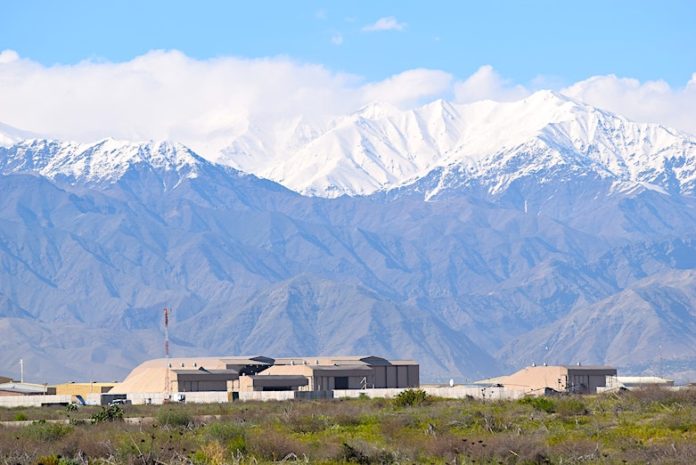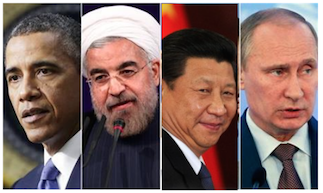The number of Afghan civilians killed and injured in the conflict has failed to slow since the start of intra-Afghan peace talks, although the overall civilian casualty figure for the first nine months of 2020 dropped by around 30 percent compared to the same period in 2019, according to a new report released by the UN Assistance Mission in Afghanistan (UNAMA).
The Mission’s latest quarterly report documented 5,939 civilian casualties (2,117 killed and 3,822 injured) from 1 January to 30 September 2020. High levels of violence continue with a devastating impact on civilians, with Afghanistan remaining among the deadliest places in the world to be a civilian.
While the number of civilian casualties documented is the lowest in the first nine months of any year since 2012, the harm done to civilians remains inordinate and shocking.
UNAMA says in a statement that all parties to the conflict can and must do more to protect civilians from harm by urgently reviewing practices and strengthening mitigation measures, as well as working towards an end to the fighting – the only way to definitively stop conflict-related civilian casualties.
In the period from 12 September – the start of the Afghanistan peace negotiations between the Government of the Islamic Republic of Afghanistan and the Taliban in Doha, Qatar – to 30 September, there was no reduction in the documented number of civilian casualties caused by parties involved in the talks in comparison to previous weeks.
Four out of every ten civilian casualties are children or women.
The period from 1 October is outside the scope of UNAMA’s latest quarterly report, but the Mission raises its increasing concern over the intensification of the fighting in Helmand, as well as several indiscriminate attacks in Nangarhar, Laghman, and Ghor along with an airstrike in Takhar and a suicide attack targeting civilians in Kabul that taken together killed and injured more than 400 civilians.
“The peace talks will need some time to help deliver peace. But all parties can immediately prioritize discussions and take urgent, additional steps to stem the terrible harm to civilians,” said Deborah Lyons, the Secretary-General’s Special Representative for Afghanistan.
“New thinking and concrete action towards safeguarding civilian life will not only save thousands of families from suffering and grief but it can also help lessen recriminations and, instead, bolster confidence and trust among negotiators,” said Lyons, who is also head of UNAMA.
The UNAMA has supported the call by UN Secretary-General Antonio Guterres for a global humanitarian ceasefire to be in place before the end of the year. Such a pause to the conflict in Afghanistan, says UNAMA, would help the fight against the COVID-19 pandemic, as well as reinforce critical efforts to prepare humanitarian assistance before winter sets in for millions of the most vulnerable Afghans. And every day without violence means civilian life is safeguarded.
A graphic illustration of the type of harm caused to civilians in Afghanistan is the fact that more than four out of every ten civilian casualties are children or women. Child casualties amounted to 31 percent of all civilian casualties in the first nine months of 2020, and women casualties 13 percent.
UNAMA documented that Anti-Government Elements (AGEs) remain responsible for the majority of civilian casualties (58 percent). Compared to the same period in 2019, the number of civilian deaths attributed to AGEs remained at similar levels, although there was a decrease of 34 percent in the total number of civilian casualties – killed and injured – attributed to AGEs.
The number of civilians killed attributed to the Taliban increased by six percent in the first nine months of 2020. In contrast, the overall number of civilian casualties – killed and injured – attributed to the Taliban dropped by 32 percent, mainly due to a reduction in the number of civilians injured by suicide attacks and ground engagements, though this was partially offset by an increased number of civilian casualties from targeted killings and illegal, indiscriminate pressure-plate improvised explosives devices (IEDs).
Attacks causing civilian casualties carried out by undetermined AGE increased. There were more incidents, especially in relation to the use of IEDs and targeted killings, in which UNAMA could not determine which AGE group was responsible. This also corresponds with a decrease in the number of incidents for which the Taliban or the Islamic State of Iraq and the Levant-Khorasan Province (ISIL-KP) claimed responsibility.
Pressure-plate IEDs, used by the Taliban, function in Afghanistan as anti-personnel landmines; they have an indiscriminate effect and are, therefore, illegal at all times. Children made up 31 percent and women 12 percent of civilians killed and injured by PPIEDs. UNAMA has called on the Taliban to meet its commitments and cease using these illegal weapons that wreak such harm on Afghan civilians.
UNAMA says in a statement that the agency is concerned about attacks deliberately targeting civilians, including education, health and humanitarian workers, members of the judiciary, tribal elders, religious leaders, and civilian government employees.
The UNAMA report finds that in the period under review there were fewer civilian casualties attributed to the ISIL-KP due to a decrease in the number of attacks.
Ground engagements, mainly between the Taliban and the Afghan national security forces, caused the most civilian casualties, responsible for more than one-third of all civilian casualties. This was followed by suicide and non-suicide IEDs (29 percent), targeted killings (16 percent), and airstrikes (eight percent).
Afghan national security forces were responsible for 23 percent of all civilian casualties.
Pro-Government Forces (PGFs) were responsible for more than a quarter of all civilian casualties – 28 percent. Civilian casualties attributed to PGFs decreased by 34 percent in comparison to the same period in 2019, due mainly to the steep drop in international military forces (IMF) airstrikes since March 2020.
Afghan national security forces (ANSF) were responsible for 23 percent of all civilian casualties; a similar number was recorded in the first nine months of 2019.
Civilian casualties attributed to the Afghan National Army, which was responsible for the vast majority of the ANSF-attributed civilian casualties, increased by 25 percent due to an increase in civilians killed and injured from airstrikes and ground engagements.
Almost half of civilian casualties by PGFs is caused by indirect fire, such as howitzers, mortars, rockets and grenades, often used in civilian-populated areas. Women and children comprise almost three out of four civilian casualties from the use of these weapons by PGFs, as the projectiles often land near, or on, civilian homes.
The Afghanistan peace negotiations offer an opportunity for parties to the conflict to consider the irreversible loss and devastating effect that the war has had on Afghans, to acknowledge this with victims, and to address their rights to truth, justice, compensation, and reparation for the harm suffered, the report emphasizes.
“Our interviews with victims and their families reveal the near-complete failure of parties to the conflict to acknowledge the harm caused, nor even to make contact with them following an incident,” said Fiona Frazer, UNAMA’s Human Rights chief.
“The parties could, at minimum, acknowledge the pain caused, and look toward ways to help build reconciliation among the millions of Afghans who have suffered a loss but whom desire an acknowledgment of what has happened to them, and a sustainable peace.”











